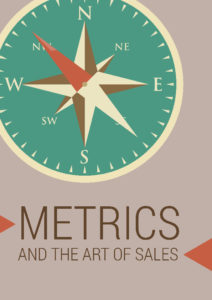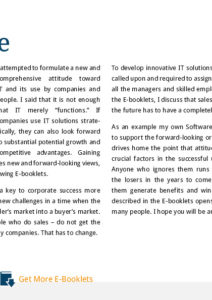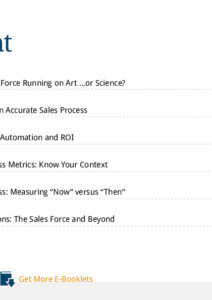Is Sales an Art or a Science
It’s an age-old argument that still persists today: is sales an art or a science? The old timers will firmly argue the former, and the modern-day salesperson armed with the latest smartphone and steeped in technology will often argue the latter. But the truth is, that both are true for a sales force – but only in the right combination.
A sales rep today is armed with plentiful technological assistance. But he or she still must be able to rapidly relate to a prospect and engender trust, know when to pitch and when to hold back, and be able to read the prospect well to ascertain when to go in for that close or when to address other issues.
The job is far easier with the pattern of an agreed-upon sales process, an intuitive CRM solution, and instant access to an infinite amount of data through the web – but in the end it is still ability and skill that will bring the sale finally to its close. A sales force operates with both art and science. A skillful combining of the two will mean steadily increasing sales for your company.
Make the Metrics of Sales Work For You
Managing a reliable sales process is undoubtedly one of the most important functions of a sales leader. All you need to do is gather the data, right?
In actuality it is not enough to rely on sales process metrics alone. Those metrics must also have context — and especially a relationship to each other so you can put them to work for you. In this eBook you will learn:
- How sales process metrics have changed over the last decade
- How to measure each and every step of the sales process
- How to understand and leverage the context of your sales process metrics
Download this free eBook and and discover some great tools for effective sales process measurement and control.
A good part of the reason you want a sales process is so you can actually view and measure the progress of sales as they go along, and monitor sales rep performance. Without a sales process, the only real measure of success you have is the total number of sales closed and the total dollar figures.
1. Is the Sales Force Running on Art…or Science?
In the end it can be seen that a sales force is operating with both art and science. A skillful combining of the two will mean steadily increasing sales for your company.
2. 4 Ways to an Accurate Sales Process
If you look back through business history, the evolution of the sales process was an attempt to adapt the methodologies of manufacturing or computing to sales. Essentially you have certain inputs that go through a specific process; given the same inputs and the same process you should end up with the same results every time.
3. Sales Force Automation and ROI
Due to these considerably reduced costs, it would seem that the question of rapid ROI has been solved – or has it? Taking a closer look, it will be found that evaluating CRM ROI is just as important as it ever was, perhaps even more so. It just has a different set of factors necessary for evaluation than it once did.
4. Sales Process Metrics: Know Your Context
Take the one final step and understand the full context of sales process metrics – and raise the number of closes consistently into the future.
5. Sales Process: Measuring “Now” Versus “Then”
You need to be able to accurately measure progress through each step of the sales process (sales pipeline) in order to fully control and predict sales. Additionally such measures have to show what’s happening now as opposed to only reviewing what happened last quarter or last year.
6. CRM Solutions: The Sales Force and Beyond
A flexible, intuitive CRM solution is crucial for a sales force to survive, let alone succeed. But that same carefully chosen and well-implemented CRM application is just as important to other key company departments whose input comes before and after sales.



































Comments